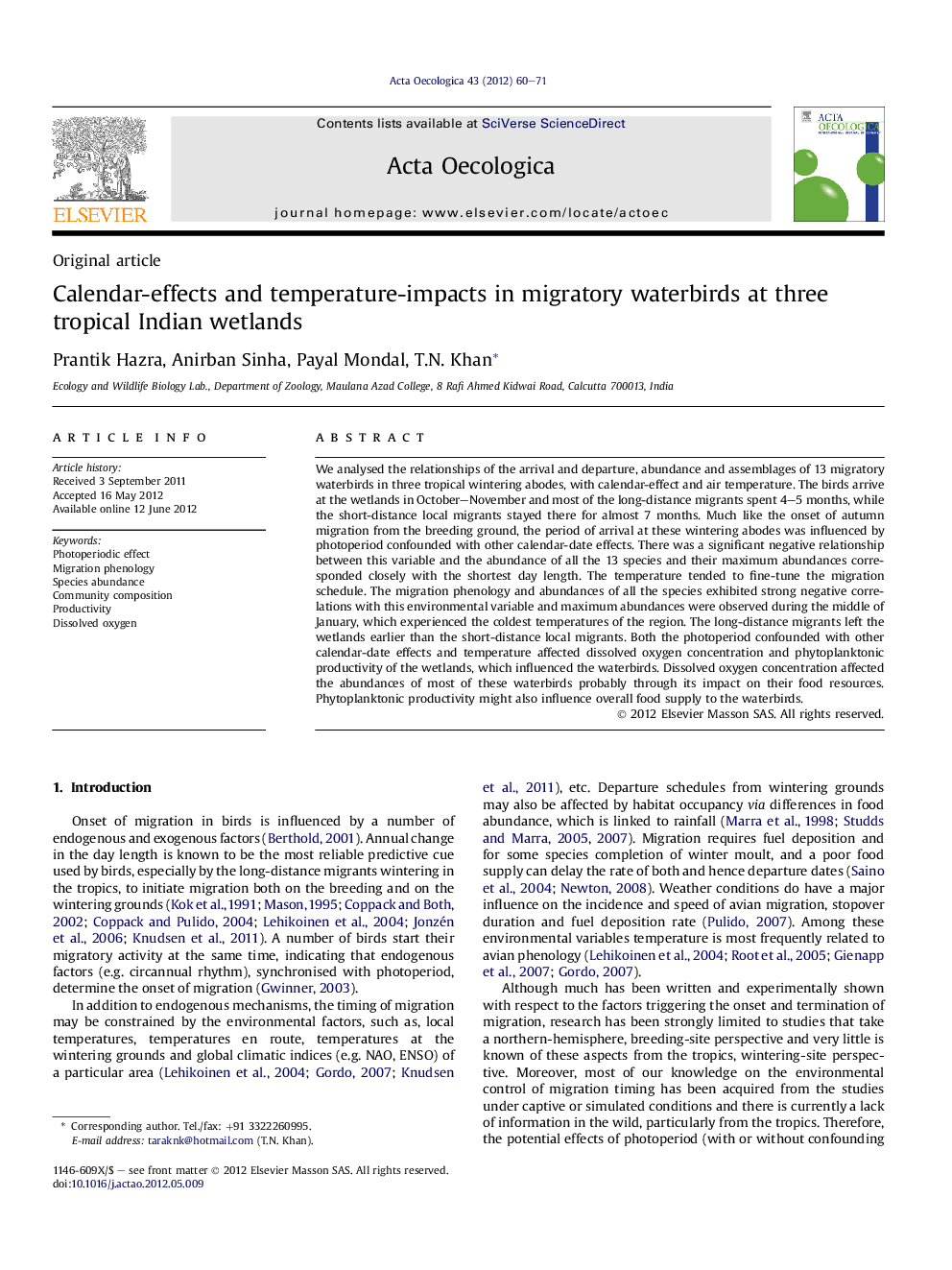| Article ID | Journal | Published Year | Pages | File Type |
|---|---|---|---|---|
| 4380861 | Acta Oecologica | 2012 | 12 Pages |
We analysed the relationships of the arrival and departure, abundance and assemblages of 13 migratory waterbirds in three tropical wintering abodes, with calendar-effect and air temperature. The birds arrive at the wetlands in October–November and most of the long-distance migrants spent 4–5 months, while the short-distance local migrants stayed there for almost 7 months. Much like the onset of autumn migration from the breeding ground, the period of arrival at these wintering abodes was influenced by photoperiod confounded with other calendar-date effects. There was a significant negative relationship between this variable and the abundance of all the 13 species and their maximum abundances corresponded closely with the shortest day length. The temperature tended to fine-tune the migration schedule. The migration phenology and abundances of all the species exhibited strong negative correlations with this environmental variable and maximum abundances were observed during the middle of January, which experienced the coldest temperatures of the region. The long-distance migrants left the wetlands earlier than the short-distance local migrants. Both the photoperiod confounded with other calendar-date effects and temperature affected dissolved oxygen concentration and phytoplanktonic productivity of the wetlands, which influenced the waterbirds. Dissolved oxygen concentration affected the abundances of most of these waterbirds probably through its impact on their food resources. Phytoplanktonic productivity might also influence overall food supply to the waterbirds.
► We evaluate the confounding effects of photoperiod and temperature on waterbird migration phenology. ► Calendar-effect greatly influences migration phenology, abundance and assemblages. ► Local temperature fine-tunes the arrival and departure dates of migratory waterbirds. ► Dissolved oxygen and planktonic productivity are impacted by photoperiod and temperature. ► Both dissolved oxygen and planktonic productivity positively influence the waterbirds.
